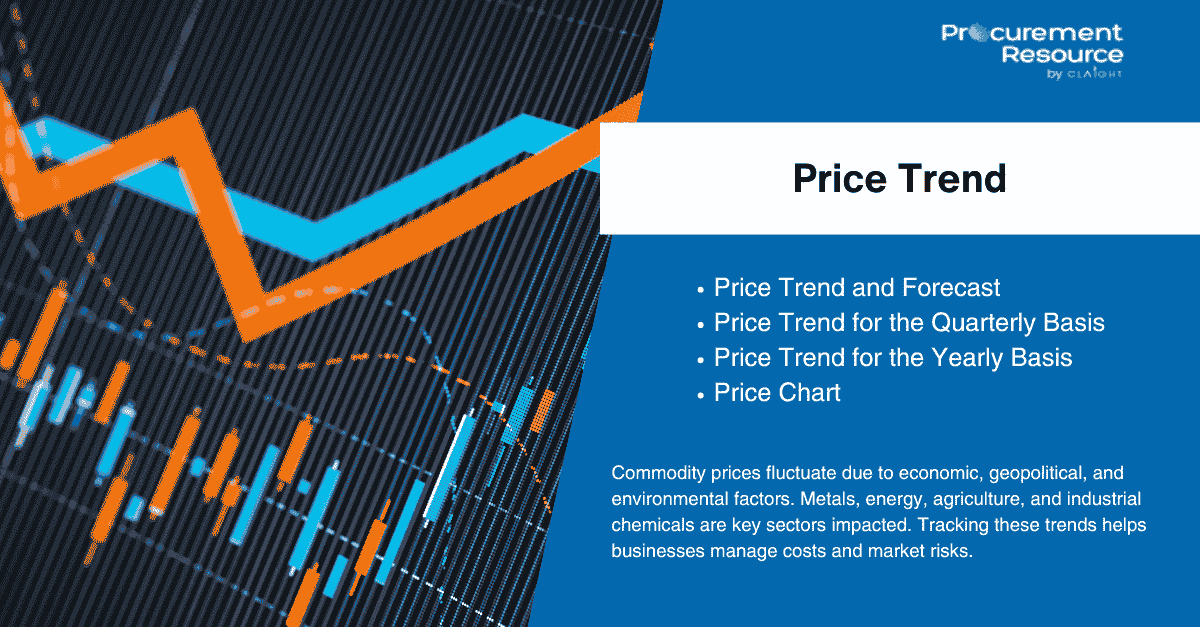Antimony, a strategic metal widely used in flame retardants, batteries, and semiconductors, is gaining attention due to increasing global demand and limited production sources. Understanding the Antimony price trend is critical for manufacturers, procurement managers, and investors navigating the volatile metals market.
In recent years, fluctuations in geopolitical stability, mining output, and supply chain logistics have significantly influenced antimony prices. This article provides a comprehensive analysis of the antimony market, including historical pricing, market forecasts, regional insights, and access to real-time price data. We will also explore current market drivers, price charts, and procurement strategies.
Latest Antimony Market Overview
The global antimony market has witnessed considerable changes due to supply-demand imbalances, environmental regulations, and the evolving geopolitical climate. Key exporting countries like China, Russia, and Bolivia play pivotal roles in price formation. Antimony oxide and antimony metal are primarily used across the chemical, electronic, and defense sectors, all of which influence global demand.
Recent industry news indicates heightened interest in antimony due to its essential role in renewable technologies, particularly in grid storage batteries and semiconductors. This shift is expected to reshape the antimony price trend in the coming years.
Historical Antimony Price Analysis
Looking back at the historical data, antimony prices have seen periods of extreme volatility. The early 2010s marked a dramatic price surge driven by tightened Chinese export quotas and increased global demand. However, subsequent years saw a correction due to oversupply and weakening industrial activity.
From 2015 to 2020, prices largely stabilized but remained sensitive to trade dynamics and production constraints. Supply-side disruptions, especially in key mining regions, have repeatedly influenced market prices.
By analyzing historical price charts, market participants can recognize patterns that may help anticipate future movements. Long-term price charts often reveal cyclical behavior, tied closely to macroeconomic factors and industrial cycles.
Antimony Price Forecast and Future Trends
Market analysts expect the antimony market to experience steady growth, with increasing demand from battery technology and military-grade applications. The metal’s unique properties—flame retardancy, conductivity, and chemical stability—make it indispensable across various sectors.
According to market forecasts, limited mining capacity and stricter environmental regulations may contribute to price escalation in the near to mid-term. Forecasting models are increasingly incorporating data from supply chain analytics, environmental policies, and global economic indicators.
When evaluating the Antimony price trend, it’s crucial to consider demand projections from end-use sectors like:
- Flame retardants used in electronics and construction
- Antimony-based batteries for grid storage
- Semiconductor applications
- Alloys and casting industries
Market Drivers and Challenges
Key Drivers:
- Rising Demand in Renewable Energy: The shift towards green energy solutions has boosted the demand for antimony, particularly in energy storage.
- Electronics and Flame Retardant Applications: Growing usage in electronic circuits and insulation materials continues to drive consumption.
- Geopolitical Uncertainty: Trade tensions and export restrictions from major producing nations directly impact supply availability and pricing.
Challenges:
- Environmental Regulations: Stringent regulations in mining regions such as China could restrict production and elevate prices.
- Limited Global Reserves: The concentration of reserves in specific regions makes the supply chain vulnerable.
- Lack of Substitutes: Antimony’s unique properties make it difficult to substitute in many industrial applications, increasing dependency and price sensitivity.
Regional Insights and Analysis
Asia-Pacific:
The Asia-Pacific region, led by China, dominates both the production and consumption of antimony. China’s policy decisions around mining quotas and export duties significantly affect global supply and, consequently, the antimony price trend. India and Japan also contribute to demand, primarily in flame retardant and battery sectors.
North America:
In the U.S., antimony is considered a critical mineral. Recent government incentives aim to reduce import dependence, which may impact domestic pricing dynamics. The North American market is expected to witness moderate growth driven by industrial applications and defense requirements.
Europe:
European nations are focusing on securing strategic minerals to support green energy initiatives. This includes exploring domestic mining potential and forming supply chain alliances, which may influence future price trends and regional availability.
Latin America & Africa:
These regions hold untapped reserves but face infrastructural and political challenges that limit immediate commercial exploitation. Future investments in mining technology and policy reform may turn these into key players in the global antimony market.
Market Intelligence: Price Chart, Analysis & Database
Tracking real-time and historical data via a comprehensive price chart is essential for informed procurement and investment decisions. Market participants increasingly rely on price databases, trend analytics, and AI-based forecasting tools to stay ahead.
A robust database includes:
- Daily and Weekly Spot Prices
- Export-Import Volumes
- Production Statistics
- Inventory Levels
- Macroeconomic Indicators
Procurement professionals use this data to predict optimal buying times and avoid price spikes. Working with specialized partners like Procurement Resource can provide in-depth market intelligence, including benchmarking and strategic sourcing insights.
Procurement Strategies in a Volatile Market
Navigating the antimony market requires an agile procurement strategy, given its sensitivity to external factors. Here are some best practices for procurement teams:
- Long-term Contracts: Locking in prices through contracts with reliable suppliers can protect against short-term volatility.
- Diversified Sourcing: Reducing dependence on a single geography minimizes the impact of regional disruptions.
- Market Monitoring: Regular tracking of the Antimony price trend and demand indicators can enable timely purchasing.
- Partnering with Experts: Collaborating with procurement intelligence platforms like Procurement Resource provides access to customized data, supplier insights, and cost models that enhance procurement efficiency.
Antimony in Industrial Applications
Antimony is a vital component in several high-performance materials:
- Antimony Trioxide (ATO): Commonly used in flame retardants, plastics, and rubber.
- Lead-Antimony Alloys: Widely utilized in battery grids for increased durability.
- Semiconductors: Critical for high-frequency devices and optoelectronics.
- Glass & Ceramics: Acts as a fining agent and color stabilizer.
With rising demand in these applications, price monitoring becomes crucial for manufacturers to maintain profitability.
Environmental and Regulatory Influence
Environmental sustainability is a growing concern in the metals industry. Mining and refining of antimony involve toxic by-products, leading to increased scrutiny from environmental watchdogs. Regulatory changes, particularly in China, have led to mine closures and stricter production controls, thereby influencing global supply and pricing.
Furthermore, efforts by the European Union and the United States to secure critical minerals via sustainable sourcing are likely to shape the antimony price trend over the coming decade.
Request for the Real Time Prices: https://www.procurementresource.com/resource-center/antimony-price-trends/pricerequest
Contact Information
Company Name: Procurement Resource
Contact Person: Ashish Sharma (Sales Representative)
Email: sales@procurementresource.com
Location: 30 North Gould Street, Sheridan, WY 82801, USA
Phone:
UK: +44 7537171117
USA: +1 307 363 1045
Asia-Pacific (APAC): +91 1203185500



